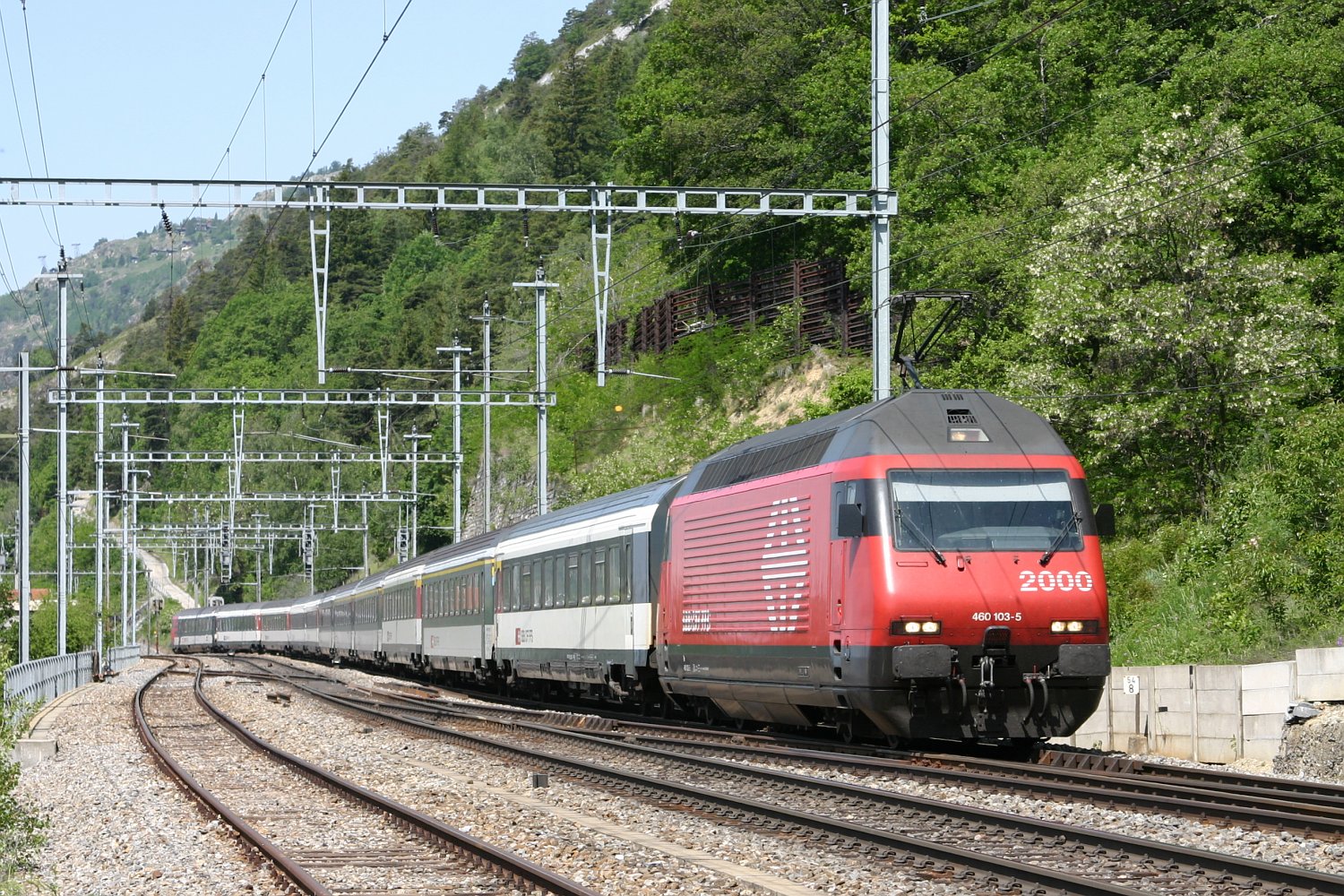|
Zug Railway Station
Zug railway station (german: Bahnhof Zug) serves the municipality of Zug, the capital city of the canton of Zug, Switzerland. Opened in 1897, the station is owned and operated by Swiss Federal Railways (SBB CFF FFS). It is a ''keilbahnhof'': it forms the junction between the Zürich–Lucerne railway and the Thalwil–Arth-Goldau railway, which connects with the Gotthard railway. Every day, some 46,000 people pass through the station. Location Zug railway station is situated in Bahnhofplatz, right in the heart of the city centre, a short distance from the shore of Lake Zug. History The first railway station in Zug was built in 1863-1864 by the architect Friedrich Jacob Wanner, in what is now the Bundesplatz. It was a terminal station, which could be reached only from the direction of Cham and Knonau. With an additional junction, trains could be turned. In 1897, as the railway lines to Zürich via Thalwil and to Arth-Goldau were opened, the station had to be moved to ... [...More Info...] [...Related Items...] OR: [Wikipedia] [Google] [Baidu] |
Switzerland
). Swiss law does not designate a ''capital'' as such, but the federal parliament and government are installed in Bern, while other federal institutions, such as the federal courts, are in other cities (Bellinzona, Lausanne, Luzern, Neuchâtel, St. Gallen a.o.). , coordinates = , largest_city = Zürich , official_languages = , englishmotto = "One for all, all for one" , religion_year = 2020 , religion_ref = , religion = , demonym = , german: Schweizer/Schweizerin, french: Suisse/Suissesse, it, svizzero/svizzera or , rm, Svizzer/Svizra , government_type = Federalism, Federal assembly-independent Directorial system, directorial republic with elements of a direct democracy , leader_title1 = Federal Council (Switzerland), Federal Council , leader_name1 = , leader_title2 = , leader_name2 = Walter Thurnherr , legislature = Fe ... [...More Info...] [...Related Items...] OR: [Wikipedia] [Google] [Baidu] |
Arth-Goldau Railway Station
Arth-Goldau railway station (german: Bahnhof Arth-Goldau) is a railway station in the Swiss canton of Schwyz and municipality of Arth. The station is located in the centre of the village of Goldau, which forms part of Arth. The station is an important junction, where the Zug–Arth-Goldau line joins the main line of the Gotthard line, and also where the Südostbahn-owned Pfäffikon–Arth-Goldau line diverges. The station has six platforms: three on the Gotthard line toward and three on the Zug–Arth-Goldau line toward . Additionally, the Arth–Rigi Railway terminates in its own platforms above and at right angles to the main platforms. Services the following services stop at Arth-Goldau: * EuroCity / InterCity / InterRegio / Voralpen Express: ** half-hourly service over the Gotthard line and Gotthard Base Tunnel to Lugano, with hourly EuroCity services continuing to , , , , or . ** Hourly service over the Gotthard line to Lugano via Erstfeld. ** Hourly service over ... [...More Info...] [...Related Items...] OR: [Wikipedia] [Google] [Baidu] |
Lucerne S-Bahn
The Lucerne S-Bahn (german: S-Bahn Luzern) is an S-Bahn-style commuter rail network focusing on Lucerne, Switzerland. Opened on 12 December 2004, the network forms part of the Central Switzerland S-Bahn project (german: S-Bahn Zentralschweiz, links=no), which also includes the Zug Stadtbahn (german: Stadtbahn Zug, links=no). Lines , the network consisted of the following lines: See also *Trolleybuses in Lucerne References External links BLS– official site {{coord missing, Switzerland S-Bahn in Switzerland S-Bahn The S-Bahn is the name of hybrid urban- suburban rail systems serving a metropolitan region in German-speaking countries. Some of the larger S-Bahn systems provide service similar to rapid transit systems, while smaller ones often resemble co ... 2004 establishments in Switzerland ... [...More Info...] [...Related Items...] OR: [Wikipedia] [Google] [Baidu] |
Ticino
Ticino (), sometimes Tessin (), officially the Republic and Canton of Ticino or less formally the Canton of Ticino,, informally ''Canton Ticino'' ; lmo, Canton Tesin ; german: Kanton Tessin ; french: Canton du Tessin ; rm, Chantun dal Tessin . is one of the 26 cantons forming the Swiss Confederation. It is composed of eight districts and its capital city is Bellinzona. It is also traditionally divided into the Sopraceneri and the Sottoceneri, respectively north and south of Monte Ceneri. Red and blue are the colours of its flag. Ticino is the southernmost canton of Switzerland. It is one of the three large southern Alpine cantons, along with Valais and the Grisons. However, unlike all other cantons, it lies almost entirely south of the Alps, and has no natural access to the Swiss Plateau. Through the main crest of the Gotthard and adjacent mountain ranges, it borders the canton of Valais to the northwest, the canton of Uri to the north and the canton of Grisons to the northea ... [...More Info...] [...Related Items...] OR: [Wikipedia] [Google] [Baidu] |
Zug Stadtbahn
The Zug Stadtbahn (german: Stadtbahn Zug) is an S-Bahn-style commuter rail network centred on Zug, Switzerland. Opened on 12 December 2004, the network forms part of the Central Switzerland S-Bahn project (german: S-Bahn Zentralschweiz, links=no), which also includes the Lucerne S-Bahn (german: S-Bahn Luzern, links=no). Lines , the network consisted of the following lines: * Baar–Zug–Cham–Rotkreuz–(Luzern) (also of the Lucerne S-Bahn) * Baar Lindenpark–Zug–Walchwil–Arth-Goldau–(Erstfeld) Reconstruction of the railway line on the east side of Lake Zug led to the suspension of the S2 between and beginning on June 9, 2019. S2 services from will operate to . S2 service was suspended altogether on 9 April 2020. Rolling stock The trains acquired by the SBB-CFF-FFS to operate the S1 services on the Zug Stadtbahn are SBB-CFF-FFS RABe 523 class electric multiple units. However, when the S1 was opened in 2004, there were not enough of these trains available to p ... [...More Info...] [...Related Items...] OR: [Wikipedia] [Google] [Baidu] |
InterCity (Switzerland)
The InterCity (abbreviated "IC") are mainline trains in Switzerland connecting the country's major agglomerations, the range of services (In Switzerland) of which is located between InterRegio (IR) (inter regional) and EuroCity (EC). Defined by the phrase "Quickly from one center to another." These trains are generally equipped with air-conditioned equipment, a CFF restaurant or a CFF bistro, a mini-bar service, a quiet area and a business area in 1st class as well as a family area or, occasionally, a family car in 2nd class. Swiss InterCity lines have been numbered by analogy with the Swiss motorway network since the timetable change of December 2018. Cyclic schedule The operation of the Swiss InterCity train network is based on the concept of the cadenced timetable. Appeared during the schedule change of December 12, 1982, it ensures that each line is served at least every hour with the same service at the same minutes. When trains cross at the right minutes in stations, t ... [...More Info...] [...Related Items...] OR: [Wikipedia] [Google] [Baidu] |
EuroCity
EuroCity, abbreviated as EC, is a cross-border train category within the European inter-city rail network. In contrast to trains allocated to the lower-level "IC" (InterCity) category, EC trains are international services that meet 20 criteria covering comfort, speed, food service, and cleanliness. Each EC train is operated by more than one European Union or Swiss rail company, under a multilateral co-operative arrangement, and all EC trains link important European cities with each other. The EuroCity label replaced the older Trans Europ Express (TEE) name for border-crossing trains in Europe. Whereas TEE services were first-class only, EuroCity trains convey first and second class coaches. The EuroCity schedule was designed with train pairs running one train in both directions, thus resulting in a more frequent service than the TEE, which normally ran only once a day. Criteria The criteria EuroCity trains are required to meet include the following: * train through two or m ... [...More Info...] [...Related Items...] OR: [Wikipedia] [Google] [Baidu] |
Island Platform
An island platform (also center platform, centre platform) is a station layout arrangement where a single platform is positioned between two tracks within a railway station, tram stop or transitway interchange. Island platforms are popular on twin-track routes due to pragmatic and cost reasons. They are also useful within larger stations where local and express services for the same direction of travel can be provided from opposite sides of the same platform thereby simplifying transfers between the two tracks. An alternative arrangement is to position side platforms on either side of the tracks. The historical use of island platforms depends greatly upon the location. In the United Kingdom the use of island platforms is relatively common when the railway line is in a cutting or raised on an embankment, as this makes it easier to provide access to the platform without walking across the tracks. Advantages and tradeoffs Island platforms are necessary for any station with many th ... [...More Info...] [...Related Items...] OR: [Wikipedia] [Google] [Baidu] |
Side Platform
A side platform (also known as a marginal platform or a single-face platform) is a platform positioned to the side of one or more railway tracks or guideways at a railway station, tram stop, or transitway. A station having dual side platforms, one for each direction of travel, is the basic design used for double-track railway lines (as opposed to, for instance, the island platform where a single platform lies between the tracks). Side platforms may result in a wider overall footprint for the station compared with an island platform where a single width of platform can be shared by riders using either track. In some stations, the two side platforms are connected by a footbridge running above and over the tracks. While a pair of side platforms is often provided on a dual-track line, a single side platform is usually sufficient for a single-track line. Layout Where the station is close to a level crossing (grade crossing) the platforms may either be on the same side of the cross ... [...More Info...] [...Related Items...] OR: [Wikipedia] [Google] [Baidu] |
Brunel Award
The ''Brunel Awards'' are given to railway companies, to encourage outstanding visual design in railway architecture, graphics, industrial design and art, technical infrastructure and environmental integration, and rolling stock. The name is assigned to them in honour of Isambard Kingdom Brunel, founder of the Great Western Railway, and designer of the giant ship . History The ''Brunel Awards'' were first awarded in 1985, during the celebrations marking the 150th anniversary of the Great Western Railway. Her Majesty Queen Elizabeth II of the United Kingdom presented the inaugural awards, at a ceremony in Bristol, England. Categories Beginning with the 2011 award ceremony, there have been five categories of award; the third category is new. * Category 1: rail stations * Category 2: technical infrastructure * Category 3: freight and railroad support buildings * Category 4: industrial design, corporate branding, graphics, furnishing * Category 5: rolling stock See also *Li ... [...More Info...] [...Related Items...] OR: [Wikipedia] [Google] [Baidu] |
James Turrell
James Turrell (born May 6, 1943) is an American artist known for his work within the Light and Space movement. Much of Turrell's career has been devoted to a still-unfinished work, ''Roden Crater'', a natural cinder cone crater located outside Flagstaff, Arizona, that he is turning into a massive naked-eye observatory; and for his series of skyspaces, enclosed spaces that frame the sky. Turrell was a MacArthur Fellow in 1984. Background James Turrell was born in Los Angeles, California. His father, Archibald Milton Turrell,Adcock, Craig, ''James Turrell: The Art of Light and Space'', Berkeley/Los Angeles/Oxford : University of California Press, 1990, p. 2. was an aeronautical engineer and educator. His mother, Margaret Hodges Turrell, trained as a medical doctor and later worked in the Peace Corps. His parents were Quakers. Turrell obtained a pilot's license when he was 16 years old. Later, registered as a conscientious objector during the Vietnam War, he flew Buddhist monk ... [...More Info...] [...Related Items...] OR: [Wikipedia] [Google] [Baidu] |



